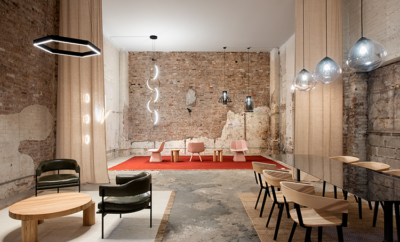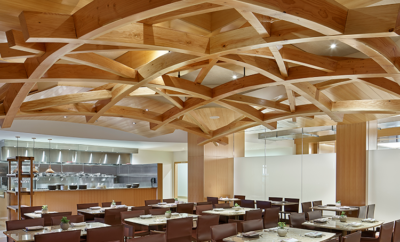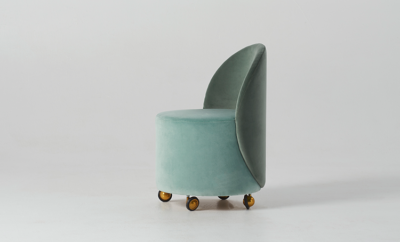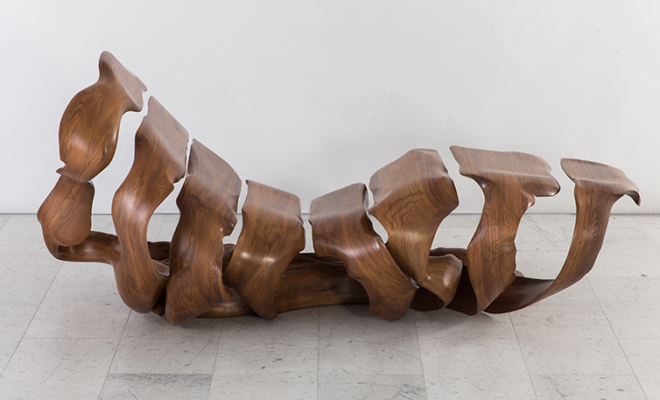 The Laminaria chaise, 2016, is carved from stacklaminated American black walnut and is finished with a layer of oil and wax. ALL IMAGES COURTESY OF TODD MERRILL STUDIO.
The Laminaria chaise, 2016, is carved from stacklaminated American black walnut and is finished with a layer of oil and wax. ALL IMAGES COURTESY OF TODD MERRILL STUDIO.
Design
Sea Change
MARC FISH DOESN’T WANT YOU TO THINK HIS furniture was created by human hands. Rather, he says he aims to “design things that look as if they’ve been grown rather than made.” The UK-based designer’s sculptural, organic wooden forms are created without traditional joinery, yet his work—which has won awards from the venerable British guild the Worshipful Company of Furniture Makers—is grounded in the past. Fish frequently looks to his country’s Victorian era interest in natural history, and to its long fascination with antiquity.
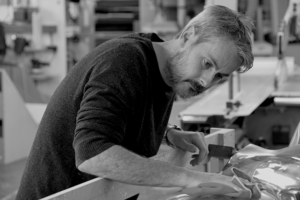 Perhaps with intentional irony, Fish took inspiration for several of his signature designs from aquatic life. His first best seller was the Nautilus table, designed in 2011: a glass-topped piece modeled on a seashell cut in cross-section to reveal its spiral of inner chambers.
Perhaps with intentional irony, Fish took inspiration for several of his signature designs from aquatic life. His first best seller was the Nautilus table, designed in 2011: a glass-topped piece modeled on a seashell cut in cross-section to reveal its spiral of inner chambers.
Another of Fish’s most striking pieces is the Laminaria chaise, a 2016 design that takes its name and shape from the Laminaria genus of seaweed, a type of kelp. It exemplifies the naturalistic effects achieved by Fish’s signature micro stack-lamination process. Wood veneers just two one-hundreths of an inch thick are layered and twisted, creating the seemingly impossible fluidity that characterizes much of Fish’s work. Despite its visual lightness, the chaise is incredibly strong, having been subjected to weeks of a prototyping process Fish calls “3D drawing,” with which he tests the piece’s form and strength.
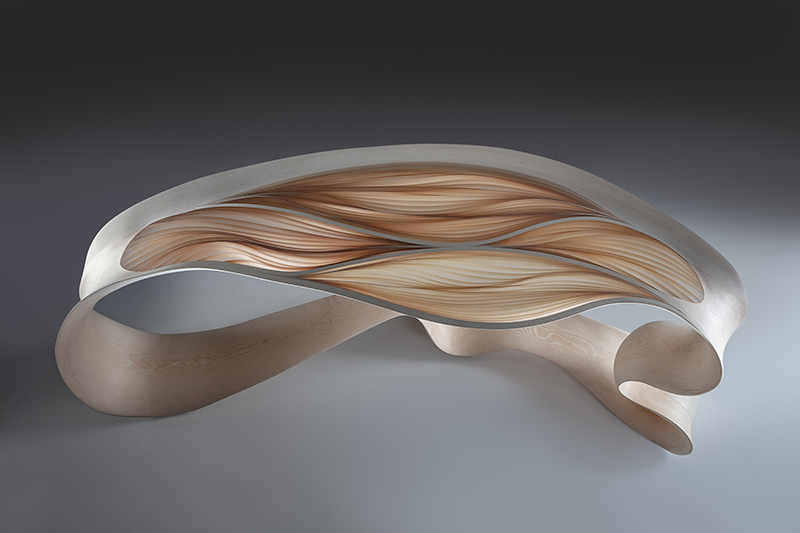
A masterwork, Fish’s Ethereal desk, 2018, was recently lauded by the designer John Makepeace for raising “practical and material virtuosity to an extraordinary new level.”
Other works by Fish are reminiscent of the ancient vessels in the collections of the British Museum, or Sir John Soane’s Museum. Pieces in his Relic vase series, completed in 2018, appear at first to be age-old ceramics of striated clay but are actually created from layers of laminated veneer. They are made to appear as if one of their sides has been worn away by centuries of wind or tide, and the breach reveals a shining, metal interior. Even the process by which the pieces are made has historical antecedents. Micro stacking may be a recently developed type of lamination, but as Fish points out: “We’ve been laminating timber for 4,000 years. It’s not new, it’s your aesthetic that makes it unique.”
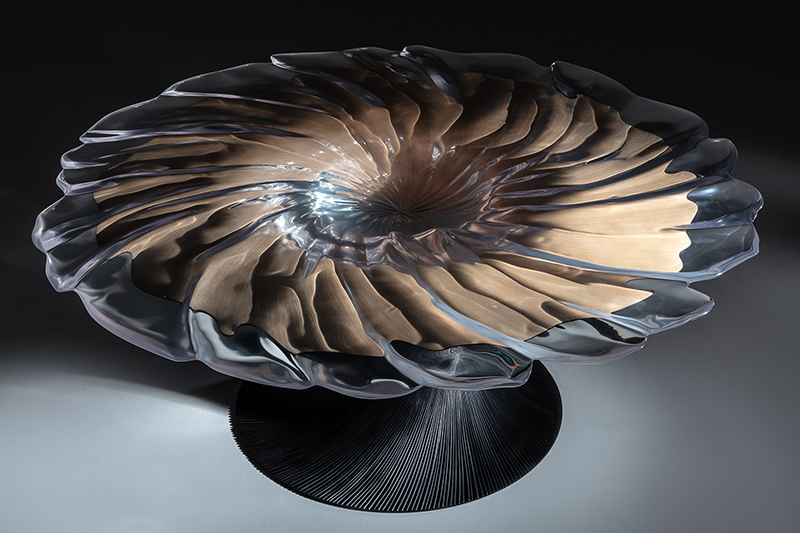
Marc Fish’s Vortex table, 2018, was inspired by the energy of natural vortices in whirlpools and tornadoes. Note the complementary centrifugal twist mimicked between the table’s top and base.
For as much as his designs hearken to the past, Fish has his eyes on the future. To educate a new generation of designers, in 2008 he founded Robinson House Studio, a furniture-making school in East Sussex. There, students learn traditional hand skills along with modern processes such as 3-D printing and laser cutting. It’s a highly experimental school that allows students to explore material science. One recent experiment: testing the efficacy of squid ink as an alternative to chemically based black stain. “Having a school is a great way of giving back,” Fish says, “but it’s also a great way of improving the standards of what is out there. It will be great for us to look back in twenty-five years and say ‘those makers came out of our school!’”
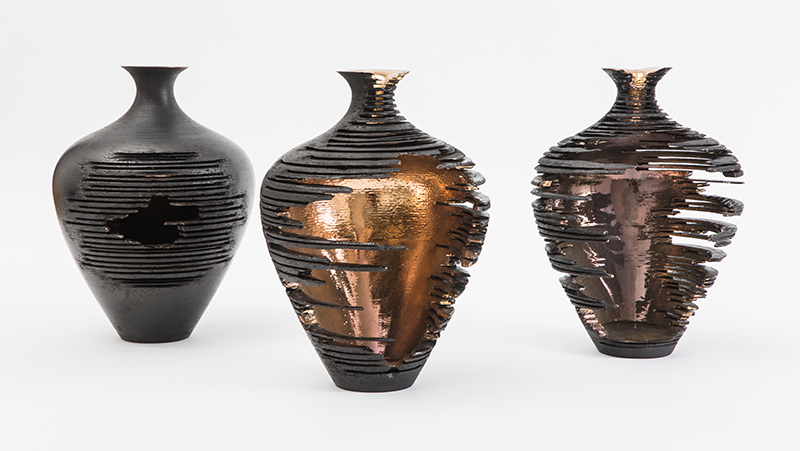
The Relic vases, 2018, are made from many layers of laminated veneer, stacked and finished by hand. The gleaming metal interiors contrast with the textured wood exterior.


